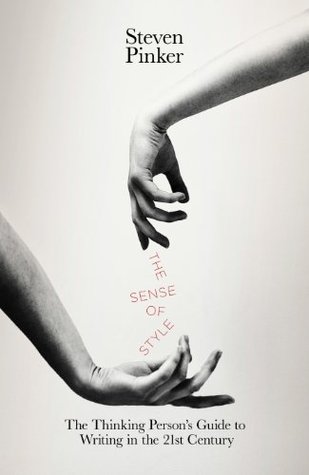More on this book
Community
Kindle Notes & Highlights
Read between
July 4 - August 10, 2016
Language is not a protocol legislated by an authority but rather a wiki that pools the contributions of millions of writers and speakers, who ceaselessly bend the language to their needs and who inexorably age, die, and get replaced by their children, who adapt the language in their turn.
But the starting point for becoming a good writer is to be a good reader.
“Do not get carried away with the destructive potential of this tool.”
A college student who writes a term paper is pretending that he knows more about his subject than the reader and that his goal is to supply the reader with information she needs, whereas in reality his reader typically knows more about the subject than he does and has no need for the information, the actual goal of the exercise being to give the student practice for the real thing.
The writer knows the truth before putting it into words; he is not using the occasion of writing to sort out what he thinks. Nor does the writer of classic prose have to argue for the truth; he just needs to present it. That is because the reader is competent and can recognize the truth when she sees it, as long as she is given an unobstructed view. The writer and the reader are equals, and the process of directing the reader’s gaze takes the form of a conversation.
Less obviously, classic style differs from practical style, like the language of memos, manuals, term papers, and research reports. (Traditional stylebooks such as Strunk and White are mainly guides to practical style.) In practical style, the writer and reader have defined roles (supervisor and employee, teacher and student, technician and customer), and the writer’s goal is to satisfy the reader’s need. Writing in practical style may conform to a fixed template (a five-paragraph essay, a report in a scientific journal), and it is brief because the reader needs the information in a timely
...more
it’s hard to know the truth, that the world doesn’t just reveal itself to us, that we understand the world through our theories and constructs, which are not pictures but abstract propositions, and that our ways of understanding the world must constantly be scrutinized for hidden biases. It’s just that good writers don’t flaunt this anxiety in every passage they write; they artfully conceal it for clarity’s sake.
Clumsy writers do a lot of that, too. They unthinkingly follow the advice to say what you’re going to say, say it, and then say what you’ve said. The advice comes from classical rhetoric, and it makes sense for long orations: if a listener’s mind momentarily wanders, the passage she has missed is gone forever. It’s not as necessary in writing, where a reader can backtrack and look up what she’s missed. And it can be intrusive in classic style, which simulates a conversation.
Quotation marks have a number of legitimate uses, such as reproducing someone else’s words (She said, “Fiddlesticks!”), mentioning a word as a word rather than using it to convey its meaning (The New York Times uses “millenniums,” not “millennia”), and signaling that the writer does not accept the meaning of a word as it is being used by others in this context (They executed their sister to preserve the family’s “honor”).
And if you must use a cliché, why not word it in a way that makes physical sense?
the passive allows the writer to direct the reader’s gaze, like a cinematographer choosing the best camera angle.
Often a writer needs to steer the reader’s attention away from the agent of an action. The passive allows him to do so because the agent can be left unmentioned, which is impossible in the active voice. You can say Pooh ate the honey (active voice, actor mentioned), The honey was eaten by Pooh (passive voice, actor mentioned), or The honey was eaten (passive voice, actor unmentioned)—but not Ate the honey (active voice, actor unmentioned).
Good prose is never written by a committee. A writer should revise in response to a comment when it comes from more than one reader or when it makes sense to the writer herself.
According to one of these theories, Greek and Latin forms must never be combined, so automobile should have been either autokinetikon or ipsomobile, and bigamy, electrocution, homosexual, and sociology were abominations


